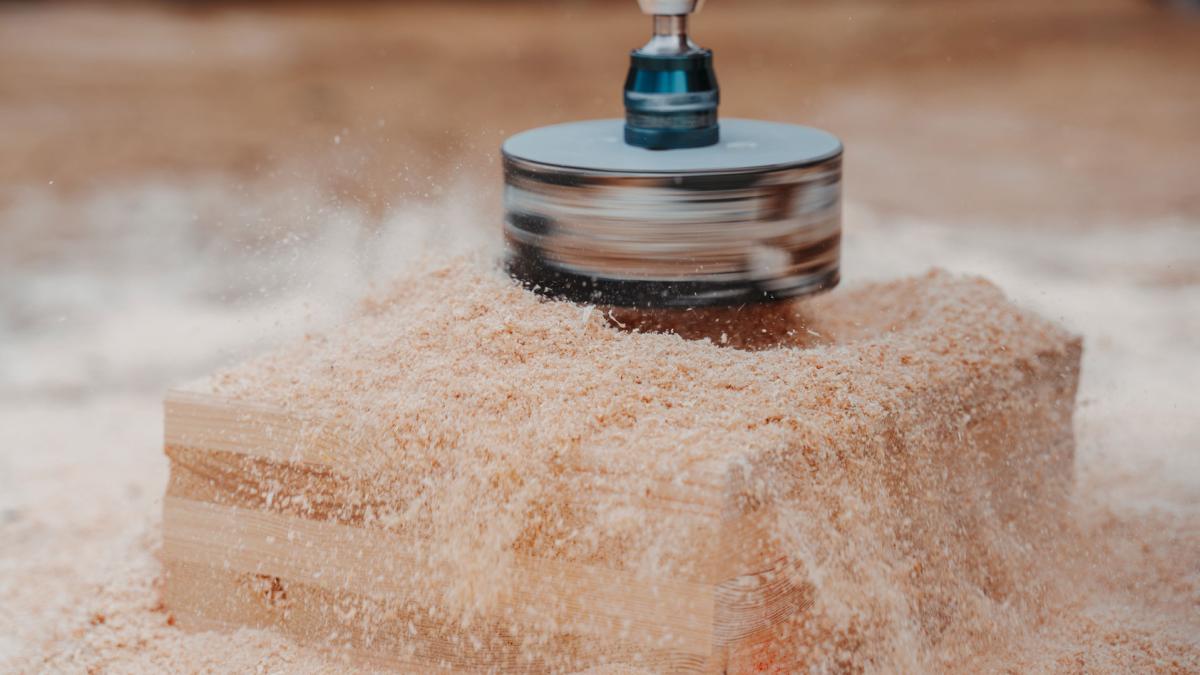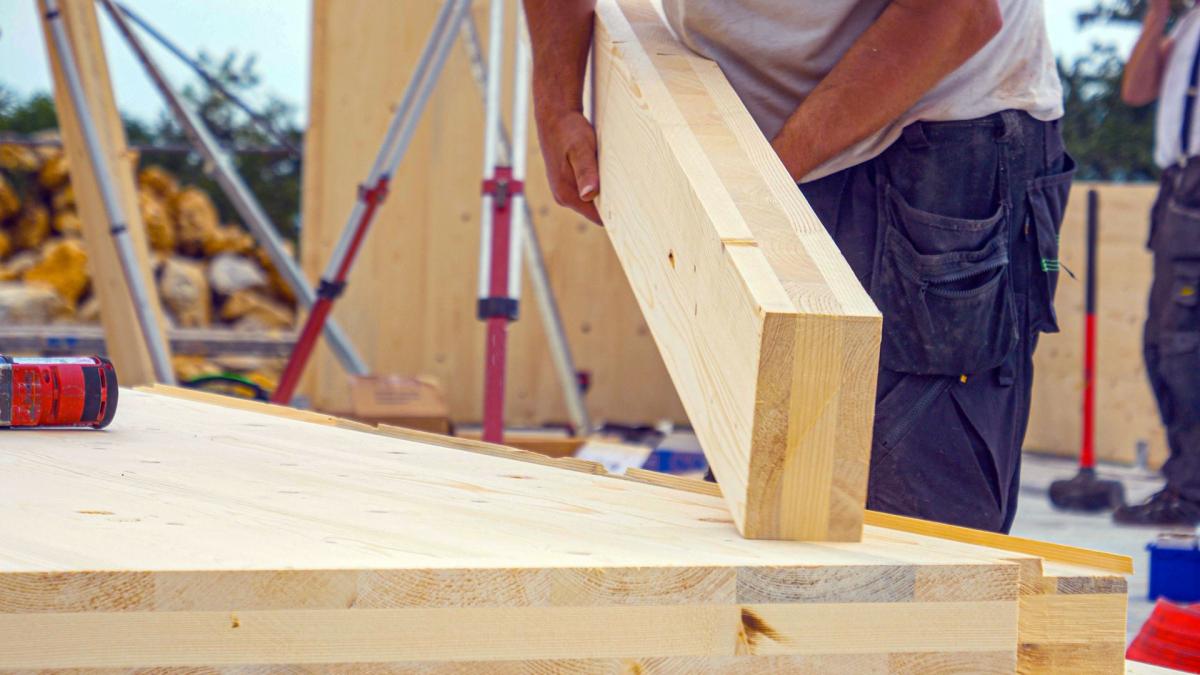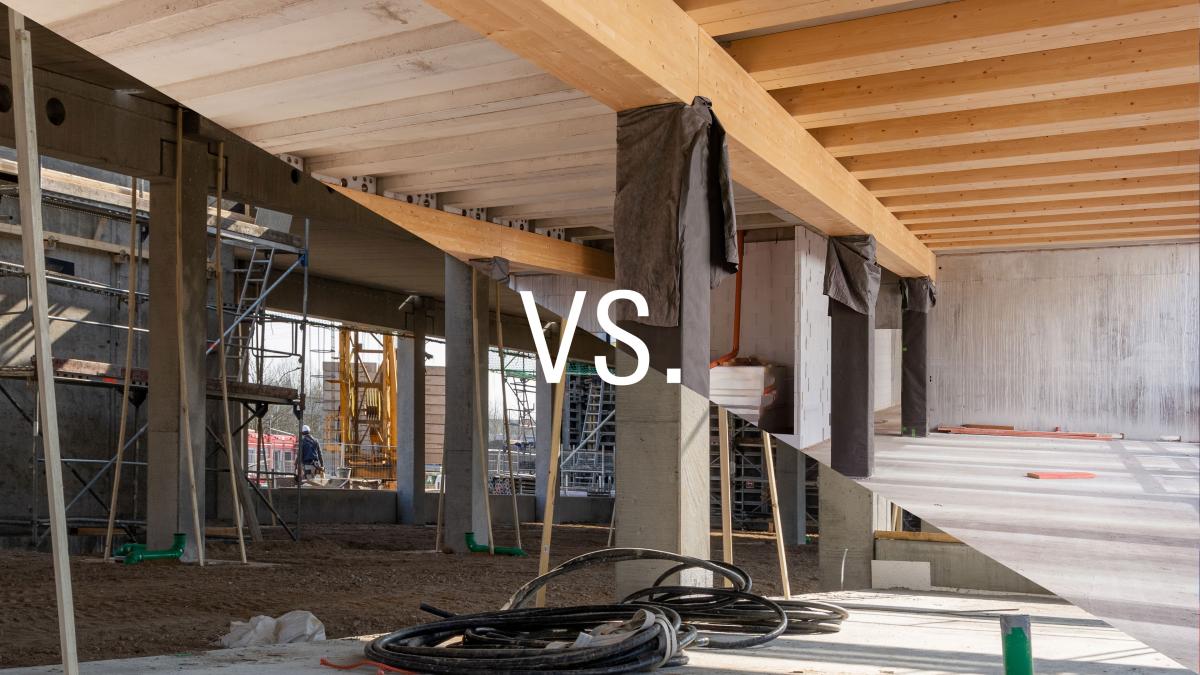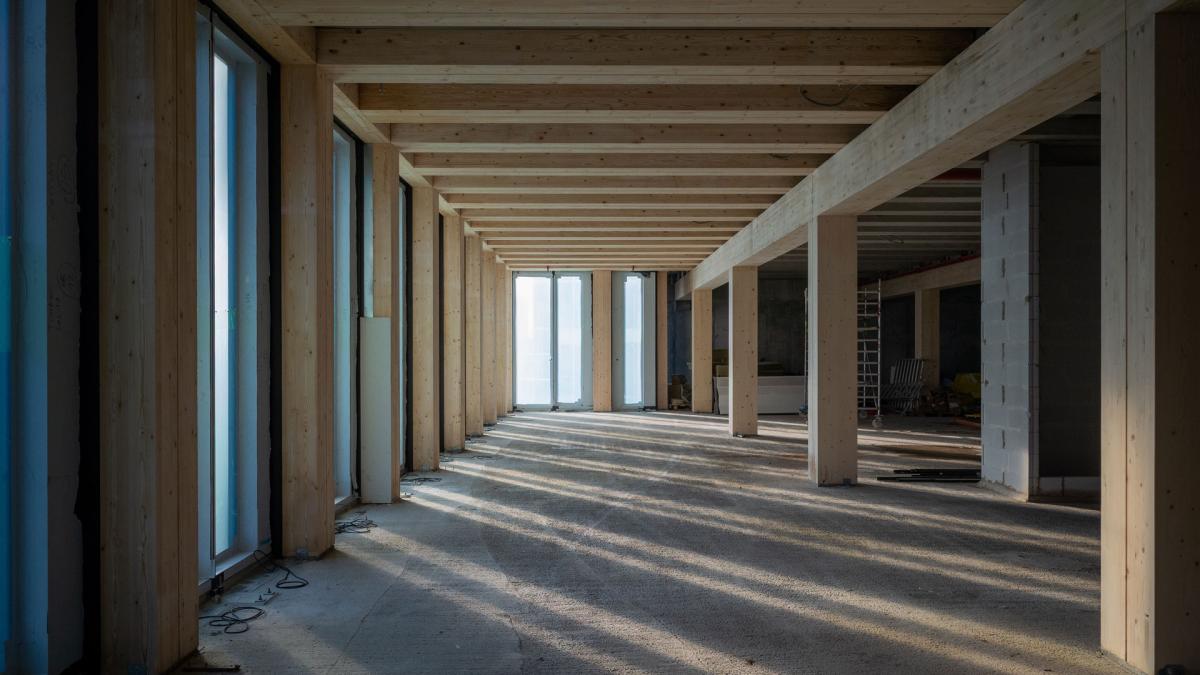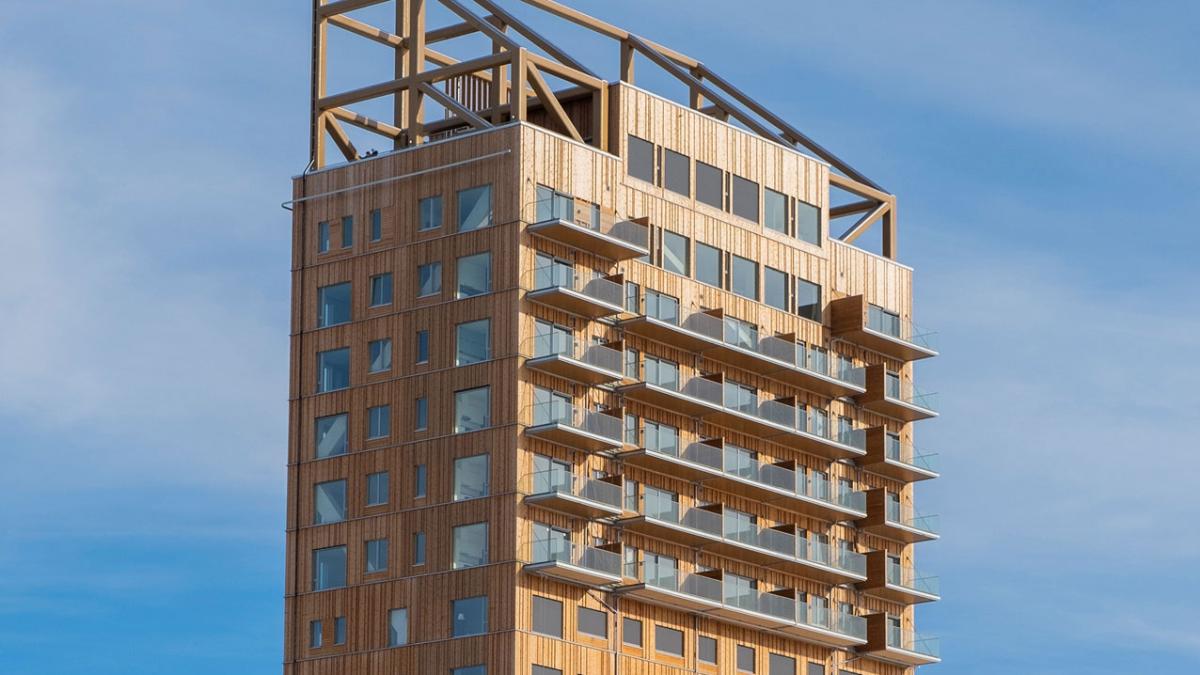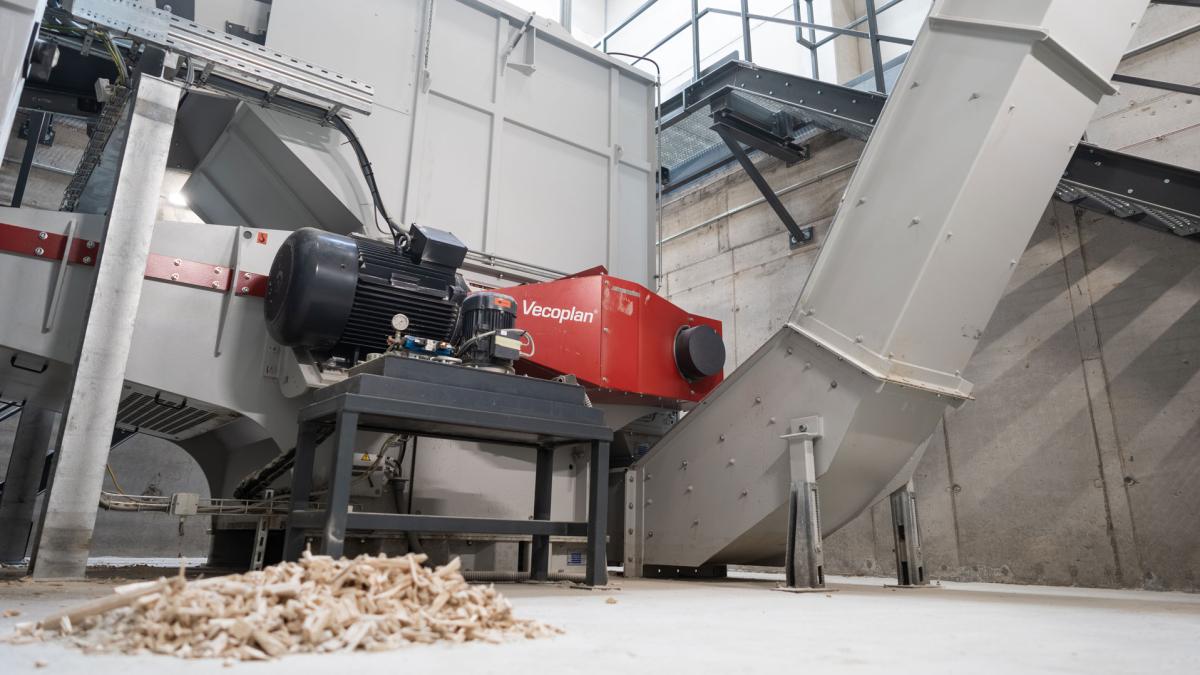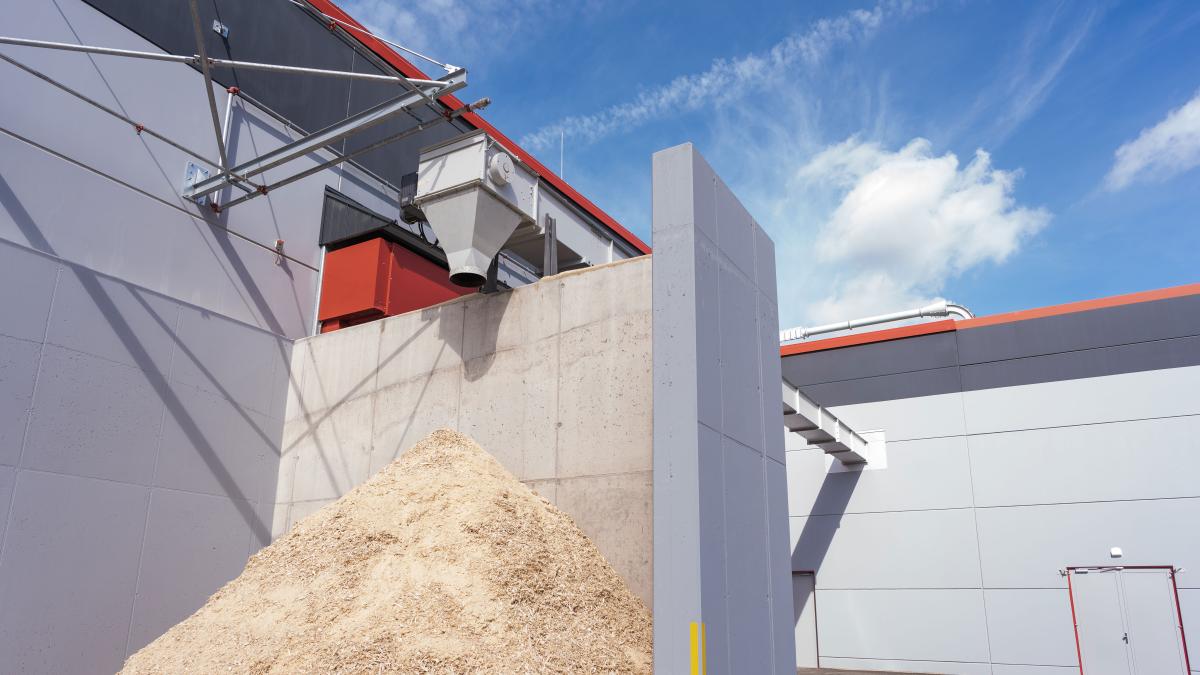Timber for construction – a product of the future
What are the trends, developments and possibilities for processing?
Cross-laminated timber is increasingly used in home construction as a greener alternative to cement and steel. Over the past 25 years, this material has evolved from an innovative idea to an industrial product of the highest quality – and we are likely to see further leaps in innovation with new CLT-based building products over the next 5 to 10 years.
Given today’s requirements for buildings to become more sustainable, CLT is now a popular solution for ceilings, roofs, walls and stairs due to its excellent environmental properties, strength, durability, appearance and versatility. More and more wood processors are switching their production to cross-laminated timber, but this also makes processing the resulting waste more demanding.
Timber construction with CLT
Advantages at a glance
- Material
CLT consists of several layers of solid wood (in Europe, these are mostly softwoods such as spruce, pine, larch and fir), which are glued crosswise on top of each other. - Strength
Despite its light weight, CLT possesses a high degree of structural strength, which enables the construction of tall buildings. An example is the Mjøstårnet in Norway, which at 85.4 meters was completed in 2019 as the world’s tallest wooden building. - Fire resistance
Surprisingly, CLT is highly resistant to fire. If fire breaks out, the surface forms a layer of charcoal, which protects the underlying wood and slows down the rate of combustion.
- Heat storage
Wood has a very good thermal storage capacity. This contributes to the energy efficiency of buildings, reducing energy costs for heating and air conditioning. - Construction time
Construction with CLT is often faster, more ergonomic and less disruptive than with traditional building materials because the individual components can first be prefabricated in a factory and then assembled on site. - Health
Several studies have shown that wood interiors contribute to improved air quality and can have positive effects on psychological well-being.
How is the global CLT market developing?
According to a study by Polaris Market Research, the global market for CLT was valued at USD 1.11 billion – and with an annual growth rate of 14.54%, it is expected to reach USD 3.72 billion by 2039. Geographically, Europe accounted for over 50% of the share of market revenue for cross-laminated timber in 2021.
This massive market growth is primarily being driven by the building and construction sector: Bulk timber and prefabricated timber structures are expected to reduce builders’ costs, create new jobs and stimulate economic growth.
The market also benefits from global government programmes and green building regulations, which encourage the trend from concrete to timber construction. And last but not least, the growing sustainability awareness of consumers is also driving demand for CLT.
CO2 emissions comparison: CLT versus steel & concrete
When non-renewable materials have to be replaced, CLT is a sustainable alternative to concrete, brickwork and steel. This is also shown in a study by the European Forest Institute (EFI), which makes the following key statements:
- Compared to equivalent structures made of steel or concrete, timber structures emit 20 to 50% less greenhouse gas over 100 years.
- This means that the construction of timber buildings in urban environments could store between 36.7 and 2495.6 Mt CO2 per capita annually, depending on the scenario and floor area.
- Replacing concrete floor panels with CLT panels could contribute to a reduction in global CO2emissions by an average of 50 Mt CO2e (excluding carbon capture and storage), given the full introduction of hybrid buildings by 2050.
Can CLT
production waste
be utilised?
The evidence is quite clear: The invention of cross-laminated timber and its market launch in 1998 represented an ecological milestone. Since then, timber structures in residential and commercial construction have been produced using flat slabs that are dimensionally stable, reliably calculable and possess multi-axis tensioning.
Despite the dwindling availability of natural resources, the utilisation of production waste offers a sustainable option for meeting the increasing demand for CLT, because CLT production creates large amounts of waste – at least 40% of waste or by-products is generated during the production of boards from logs in sawmills alone.
Additional waste, mainly due to window and door cutouts, is also generated during the production and trimming of the raw panels. A research report by the Technical University of Kaiserslautern shows that the waste generated during the production of the final solid wood components amounts to a further 20%.
To create a high level of sustainability, new ceiling and wall elements must be produced from these waste cutouts. Processing the production waste also results in a more efficient process chain – if the new raw material is processed and manufactured directly at the production site, transport distances are reduced to a minimum.
What should we always bear in mind when processing CLT?
We also believe that CLT is the building material for a sustainable future. After all, building in a way that conserves energy and resources as much as possible is in everyone’s interest – and re-using large amounts of production waste offers great potential for improving the efficiency, competitiveness and environmental performance of the material.
However, processing cross-laminated timber can be challenging, because in contrast to conventional wood waste, CLT consists of large and very strong pieces of solid wood, which are laminated and glued together. Changes in humidity and climate can also alter the structural properties of CLT, making processing even more difficult.
Building for a sustainable future with cross-laminated timber
Do you want to master the challenges of CLT processing and are looking for a competent partner to support you? Vecoplan has already equipped customers with complete plants that offer everything necessary for processing CLT, including crushing, conveying, storage and separation. Just get in touch with us – we look forward to hearing from you!
Are you faced with the decision to invest in CLT processing? Then get in touch with us – we’ll give you the best possible advice: wood@vecoplan.com
